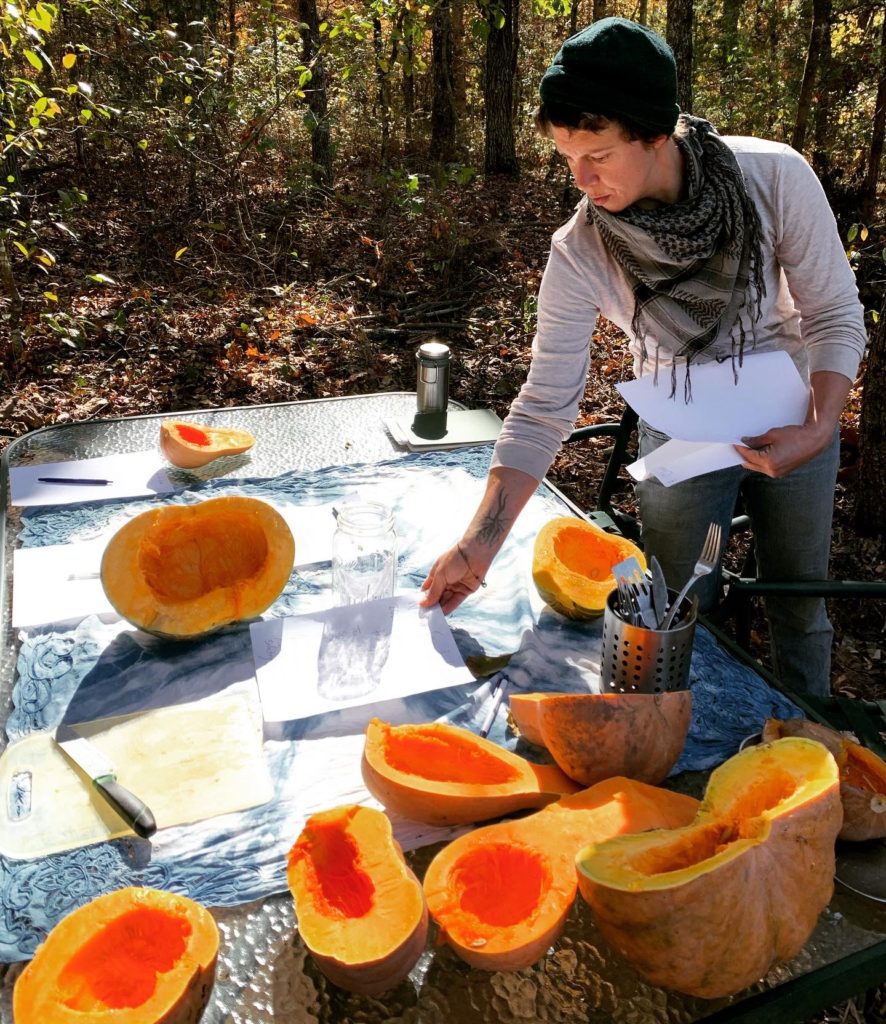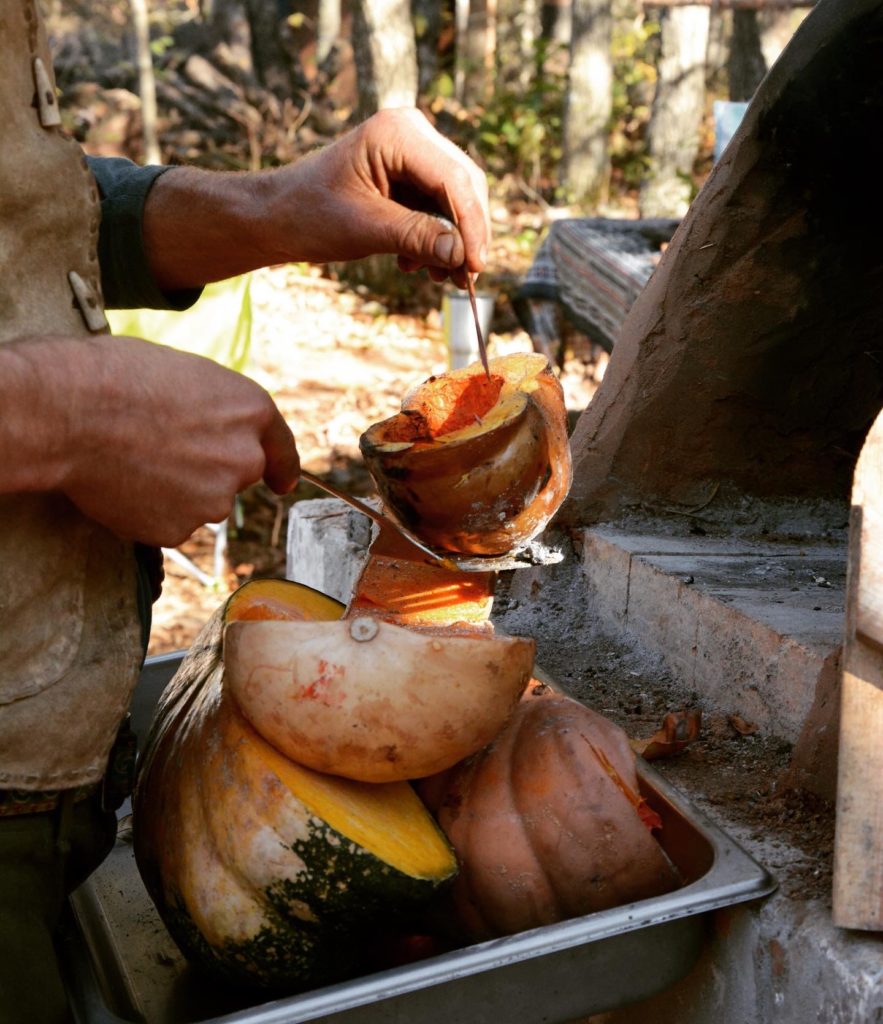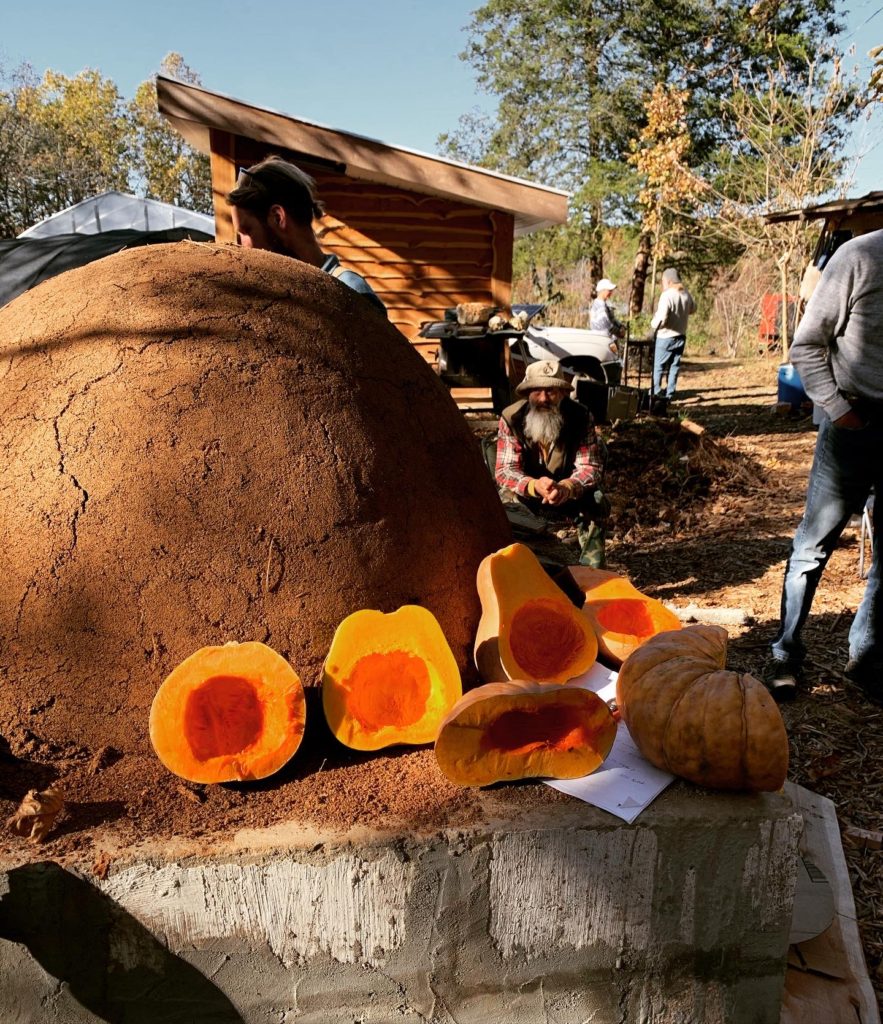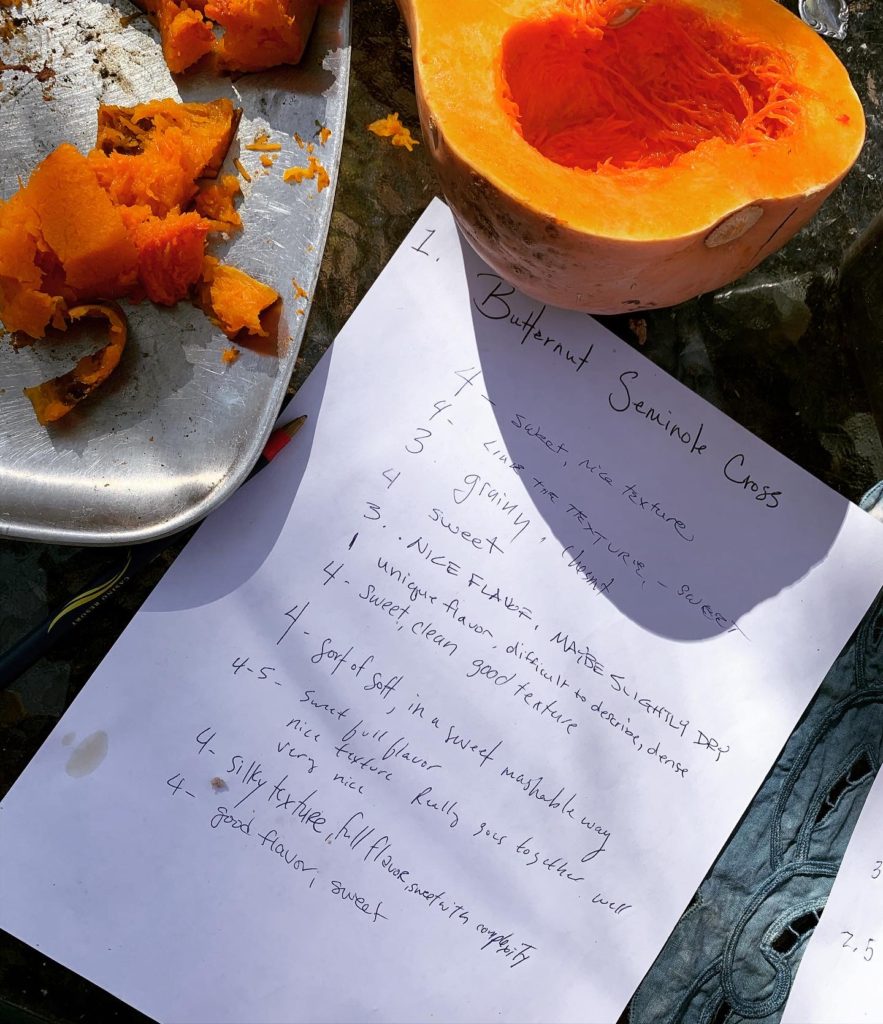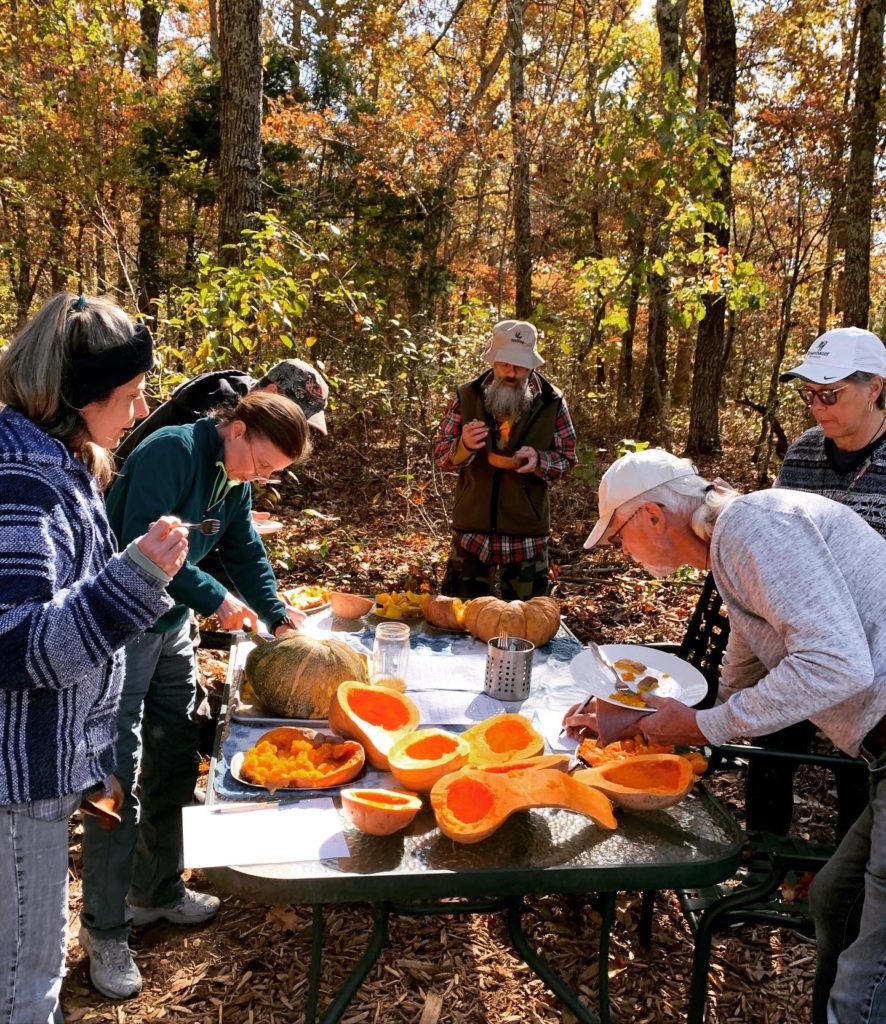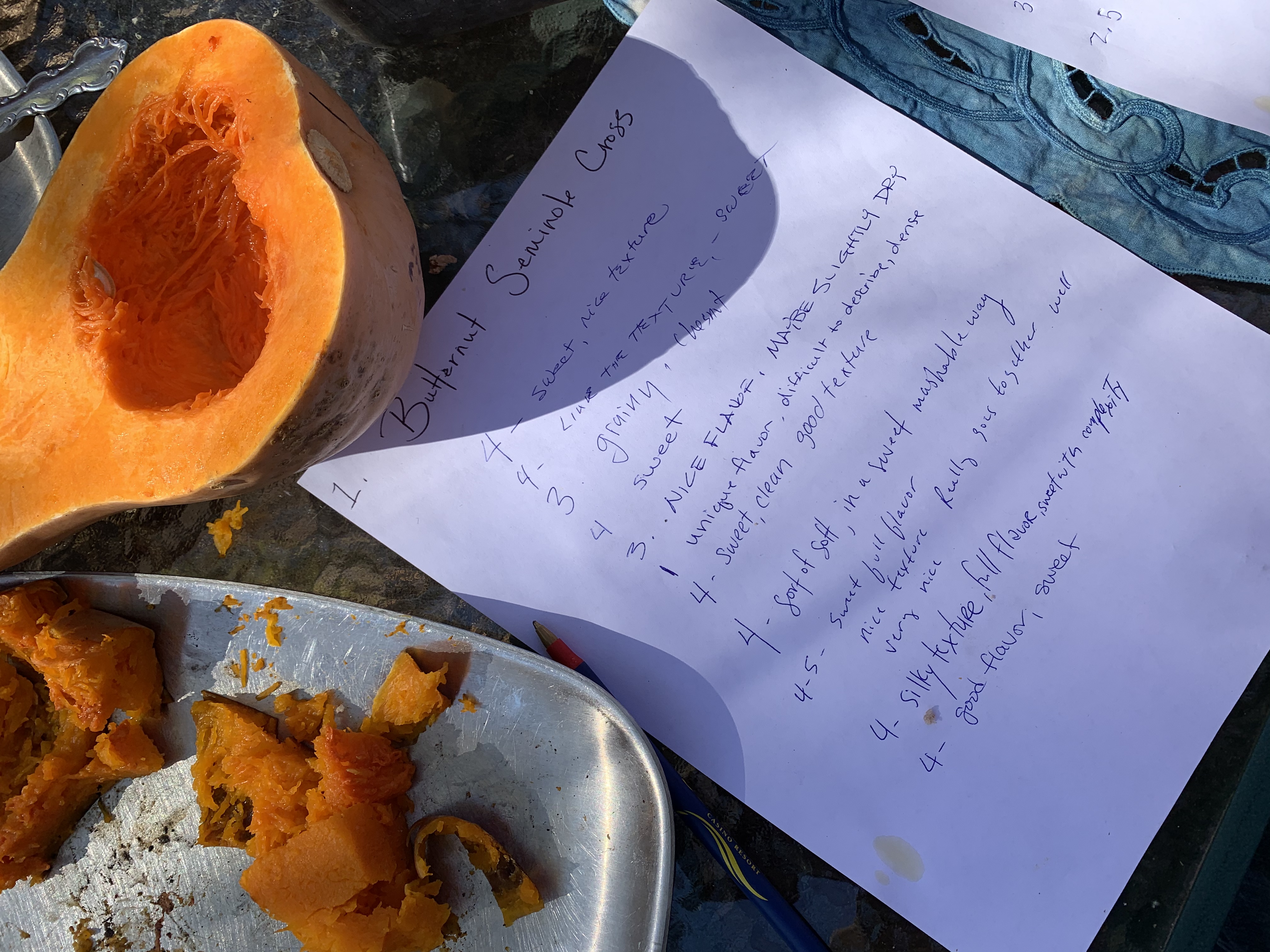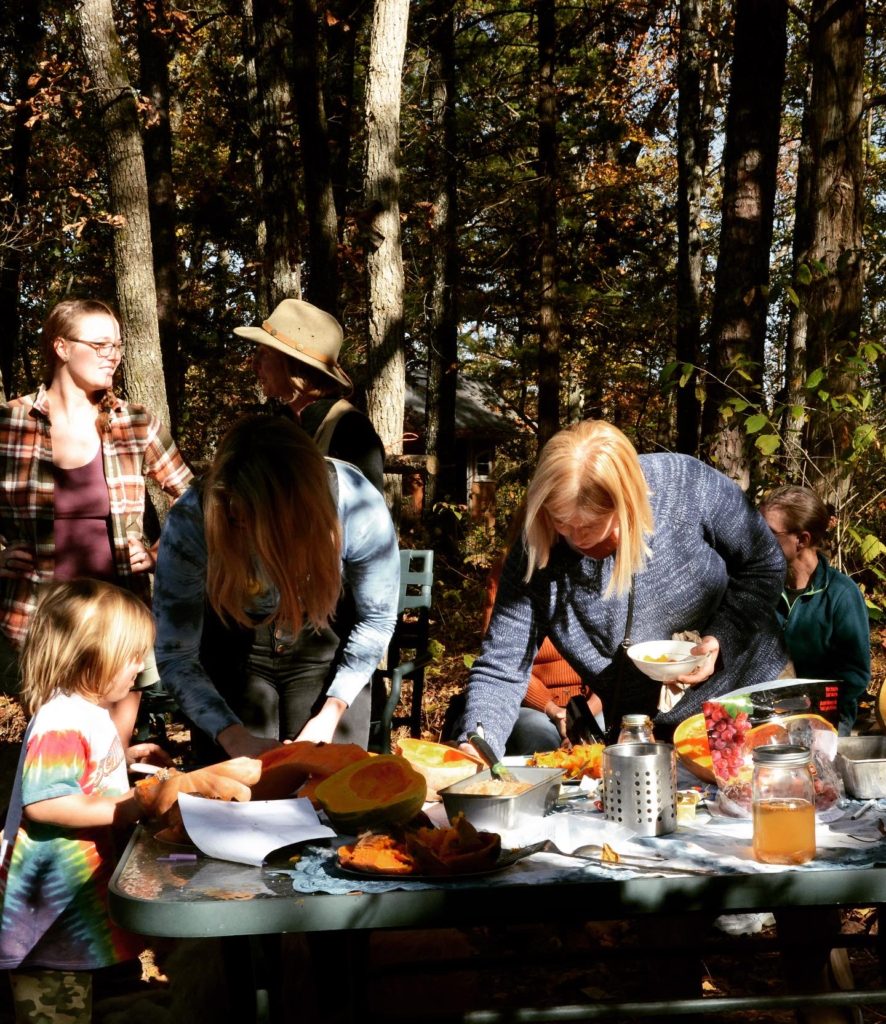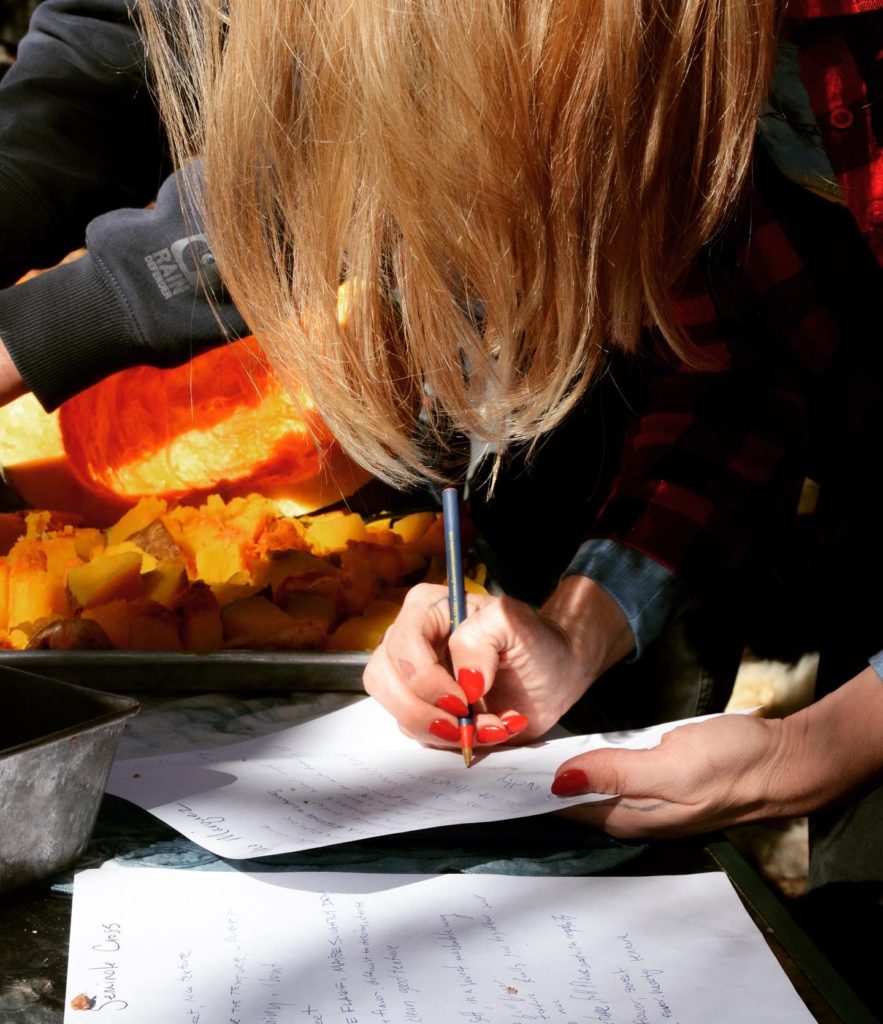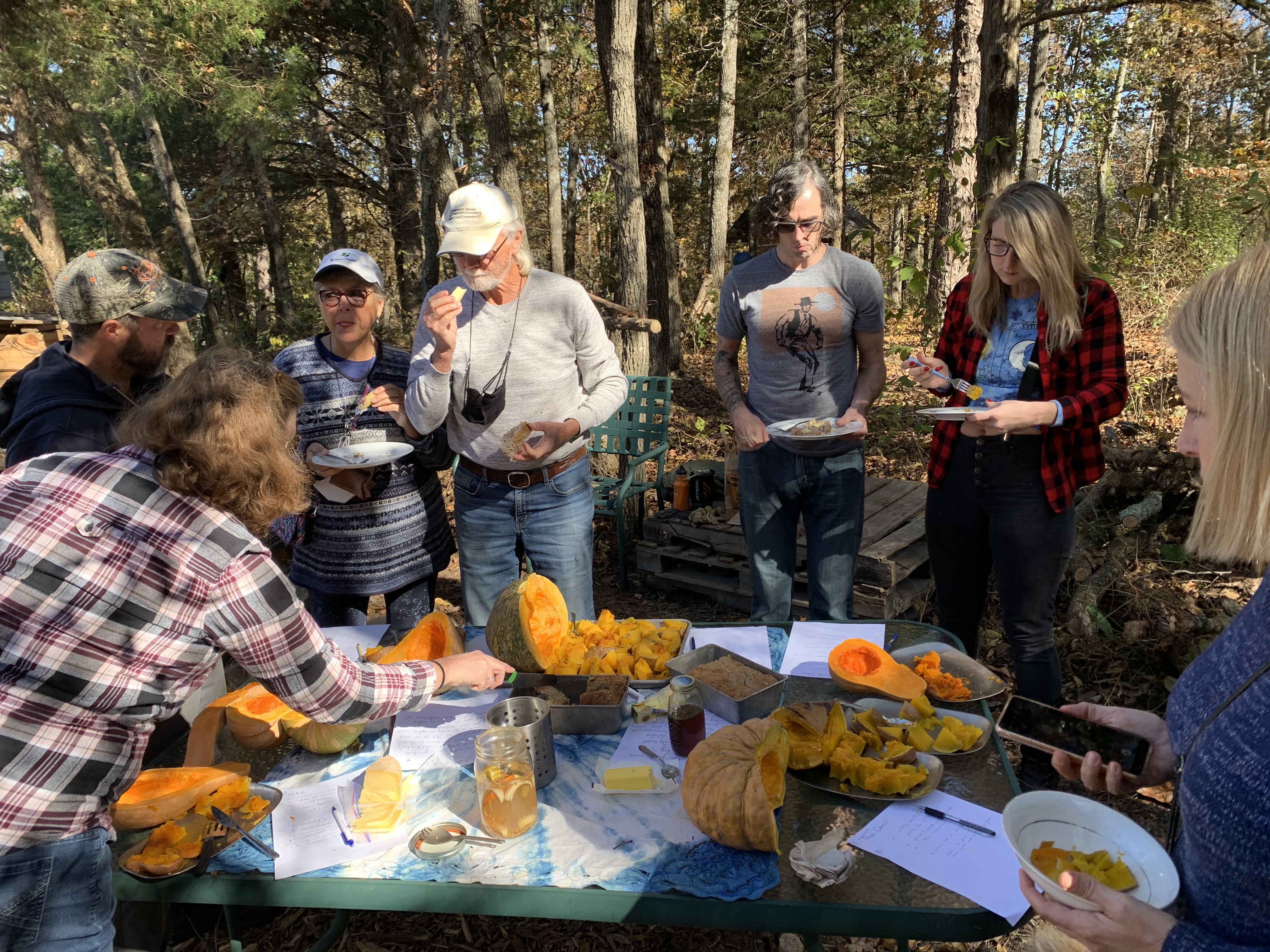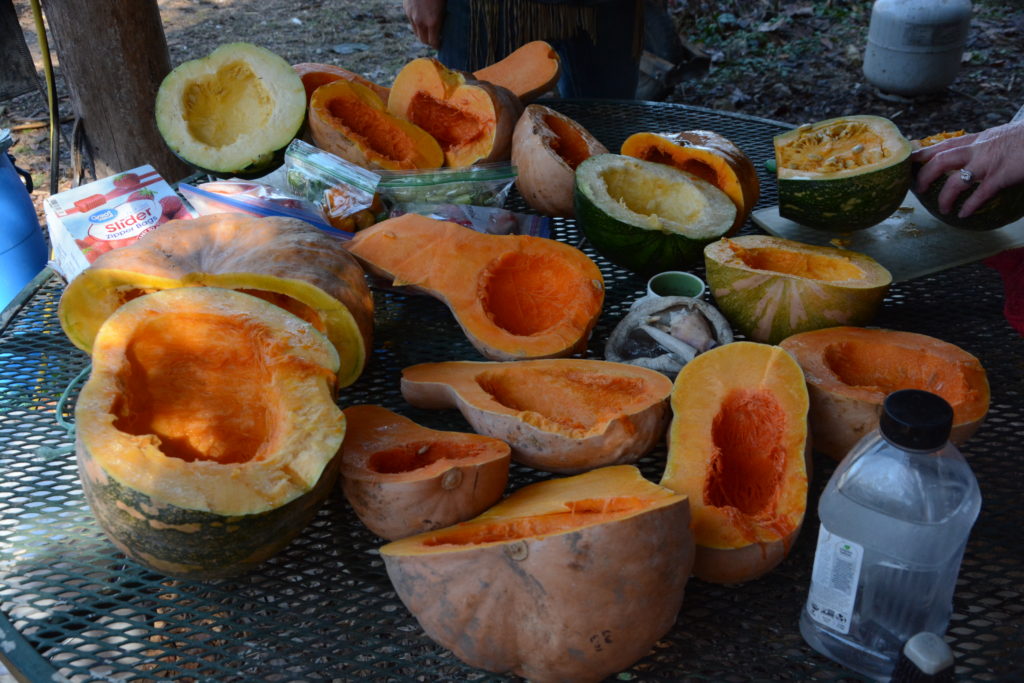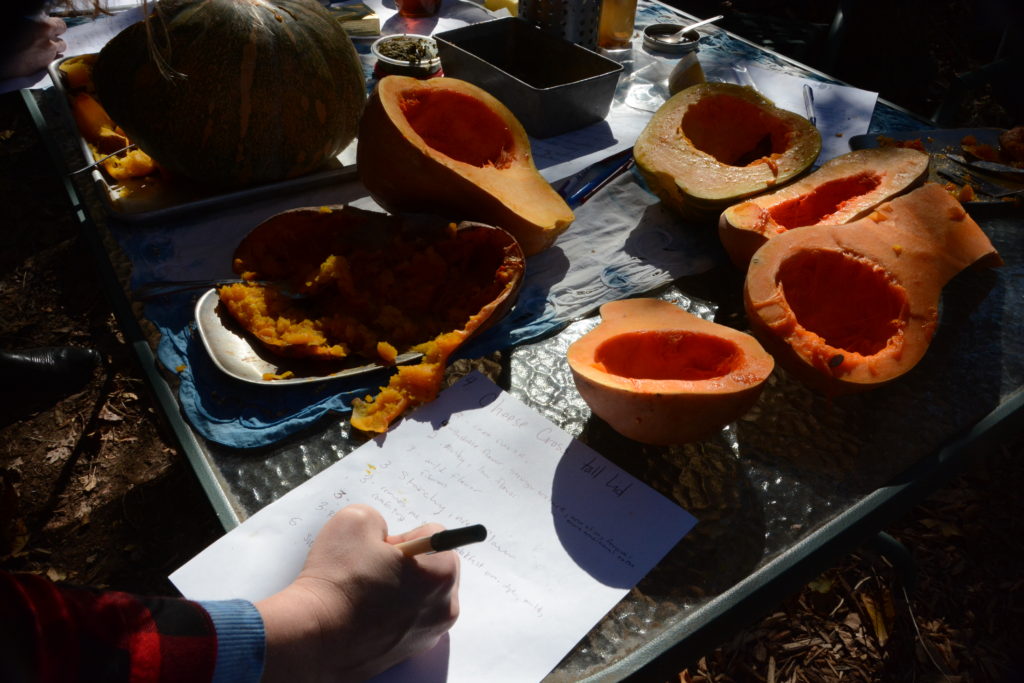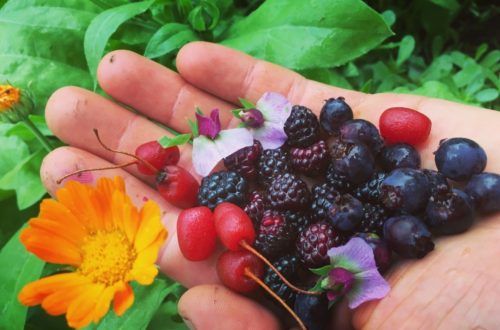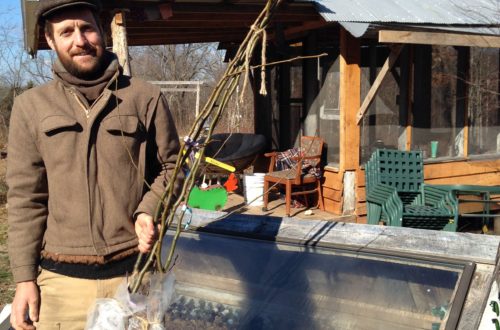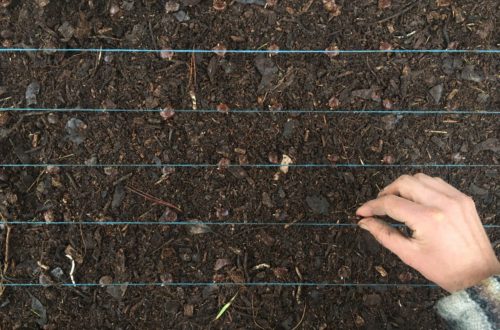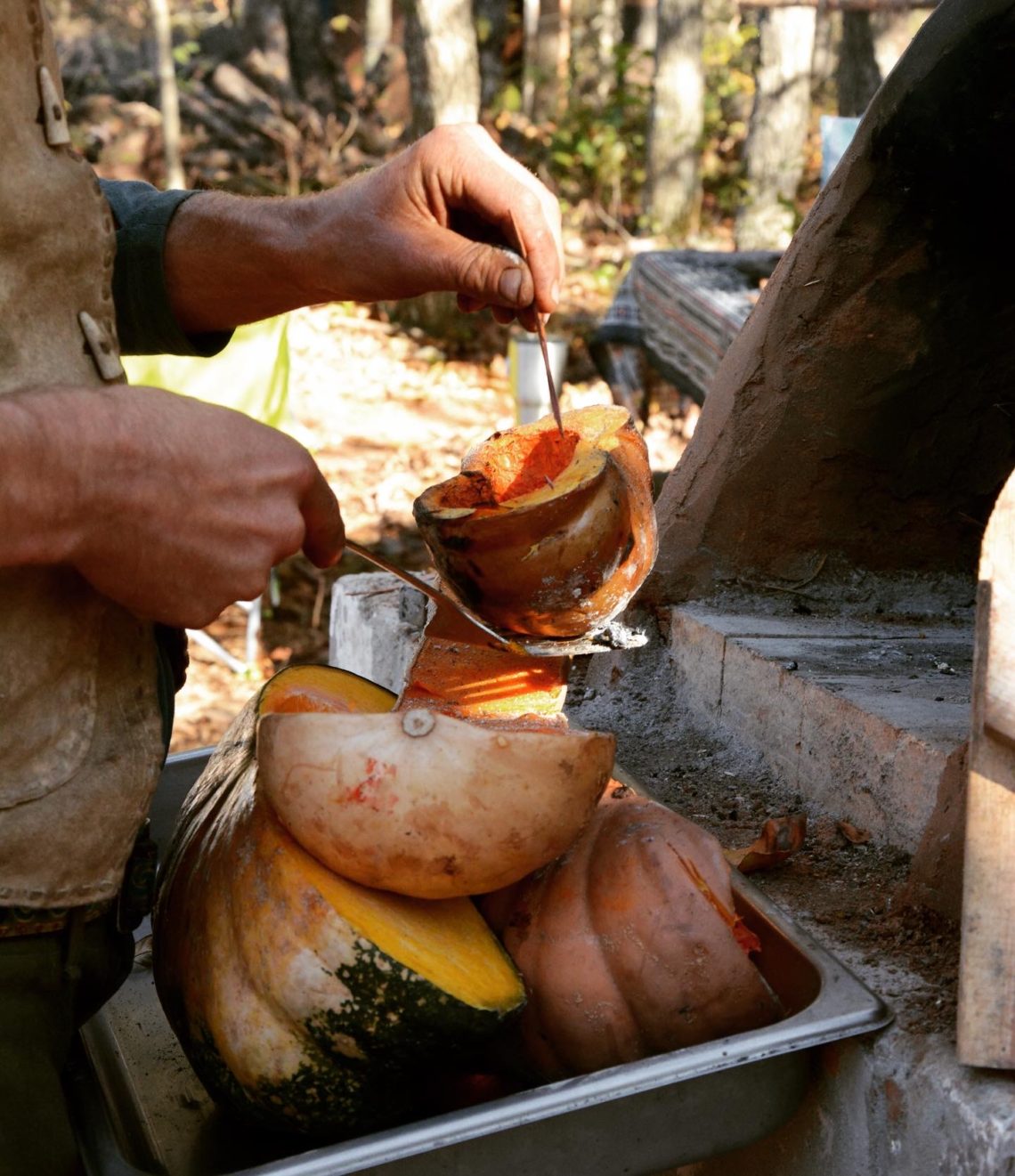
Community Squash Tasting Day
Saving seed and growing food is inherently place based. The characteristics of the seeds you save becomes the nourishment that fills your and possibly others’ bodies. It is one of the great gifts of growing food. Cooking it and sharing it brings us together and infuses us with a sense of place.
If you’ve read my intro article to the squash breeding project, Breeding C. Moschata for Squash Bug Resistance, you know I’m endeavoring to breed a squash bug resistant moschata squash. I have brought together a diverse array of genetics and with that comes squash of different sizes, shapes, texture, flesh color and taste profile. As a part of my breeding project, I hosted a squash tasting day to get feedback from the community concerning taste and texture. After all, plants are not bred in isolation and for this project to work most effectively, the squash genetics will be held by the community and not just grown by me. This not only insures greater genetic diversity over time, it allows the seeds to retain more information as they’ll be subjected to different conditions, selection pressures and growing methods.
I hosted the squash tasting event at our homestead on November 6, 2021. Twenty people came with bellies ready to taste these squash. Ini and I had just completed the cob oven the week before! It was a race to not only prepare the oven for the squash tasting event, but also to beat the encroaching hard frosts (cob and clay plaster do not do well fully drying in freezing temps). We had a lovely day together and the folks who showed up gave me truly valuable feedback. Here are some photos showcasing the day as well as the data we compiled from their comments. After I present that, I’ll share what I gleaned from the feedback, as well as my thoughts on the future of the project and how I envision the role community can play in bioregional plant breeding.
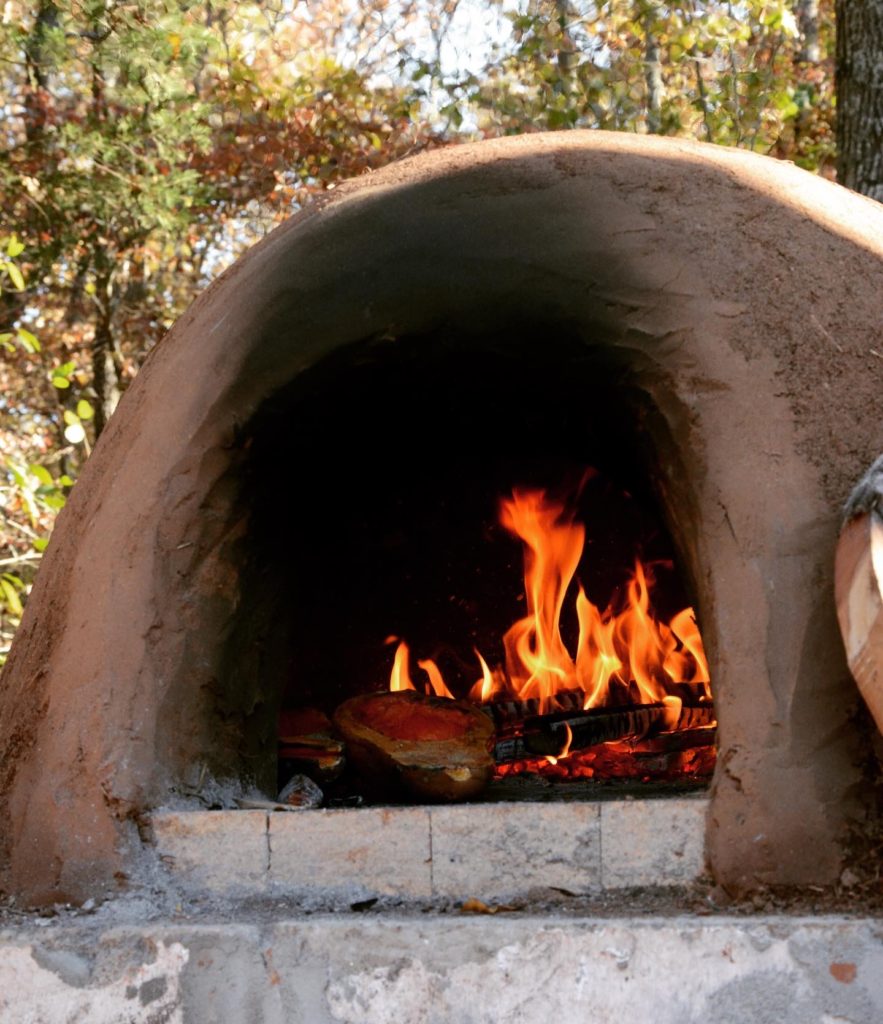
Squash cooked in a cob oven is pretty tasty! We chose squash representing the main phenotypes (at this point in the project, the lines have blurred beyond simple varieties though I still tend to use loose descriptors harkening back to parentage) to gather data and opinions on taste and texture.
Squash was rated on a scale from 1-5 (1 is worst, 5 is best) and folks had space to write a short description.
Butternut Seminole cross: 3.8
“sweet, nice texture”, “grainy, chestnut”, “dense, unique flavor”, “soft in mashable way”, “full flavor”, “silky”, “sweet with complexity”, “buttery, hearty”, “I like the orange”
Rancho Marques: 2.9
“lacks flavor”, “bland”, “nice mild flavor”, “too fibrous”, “take savory or sweet flavors well in curry”, “nutty”, “creamy smooth”, “real squashy”, “risotto or spaghetti squash-like, I’d fight a bear for this squash”, “texture worth lack of sweetness, my favorite”, “did not like”
Cheese cross: 3.1
“subtle flavor, stringy texture”, “one of my favorites, more traditional taste”, “mushy”, “starchy”, “like breakfast porridge, mild and comforting”, “rich, nutty, yet mellow”, “sweet, juicy comfort food”
Molena: 4.2
“savory pumpkin”, “lots of flavor”, “juicy”, “succulent, sweet, smooth, not stringy”, “sweet, rich flavor”, “acceptable flavor”, “firm texture”, “I’d eat it on purpose not just for nutrients or in soup”
Mrs. Amerson’s x Crookneck: 2.9
“sweet, pretty smooth”, “slightly sour, odd flavor, but good”, “not a strong flavor”, “I wanted to spit it out”
Thai Kang Kob cross: 2.2
“watery, less flavorful”, “potato-like with toasted nut”, “mild flavor, nice texture”, “bland, good for savory dishes”, “pretty squash, nothing to offer for flavor”
Rancho x Thai Raw Ka Tok: 2.3
“meaty in flavor and texture”, “meaty, savory, buttery”, “nutty flavor, like a potato”, “starchy, nutty”, “tasty, smooth”, “nope”
Rancho Thai cross: 3.7
“comforting, sweet, good for all things ‘pumpkin’ if pureed”, “subtle sweetness”, “citrus flavor (acid)”, “’yum! It tastes sweet!’”, “nice texture and very sweet”, “interesting flavor, like it a lot”
Results
As you can see, the opinions vary. What was absolutely disagreeable to some, was another’s favorite. Some people prized texture over flavor and others went straight for the sweetest squash. The overall winner of the day was “Molena”, a landrace heirloom squash from a town of 475 people of the same name in Georgia. The seed was sent to me through someone on instagram and she said people have grown it in that region for some time. It also grew very well here.
Future selection from this grex
As I’ve said many times, this is a community squash breeding project. I started this breeding endeavor because I had so much trouble growing squash due to the squash bugs and I know people in this bioregion share that problem. I want my community (and beyond) to be able to grow squash easily and in a low-input sustainable manner. To that effect, I am sharing these seeds with people also interested in breeding and selecting from this grex. They are available in our online shop (paused for the winter, but will open again in time for spring). If you need larger quantities, please contact me.
After getting the feedback from the squash tasting, I realized that, though this squash lineage will always be diverse, it is up to individuals to select anything notable to them and continue breeding that line toward their own aims. Personally, Ini and I treat squash as a staple crop rather than a sweet treat. It is challenging to eat sweet squash multiple times per week. For example, after the squash tasting I was “squashed out” for a few days! We tend to prefer less sweet, larger squash with denser, firm texture for use in our diet in soups, baked dishes and more. As this current genetic pool stands though, one could easily take the squash in many directions. There is a lot here!
In 2022, I plan to grow out a representative sample from this grex. I have been selecting the tastiest, best keeping squash from over 150 squash that I grew in 2021- all of which survived the squash bugs. That seed is available on our website. In years to come, traits like dense flesh from the Thai Raw Raw Tok, for example, will cross with the bright orange flesh of the Lofthouse crosses with the size of a Rancho Marques and the small cavity of the butternut. All of this will take time and I’m excited for what the future holds. All of the seed I am saving comes from plants that withstood the squash bug pressure, so the main selection criteria is well on its way to becoming bioregionally adapted.
Thanks to everyone who came out for the squash tasting day!
And special thanks to Denise Vaughn for many of these spectacular photos!


